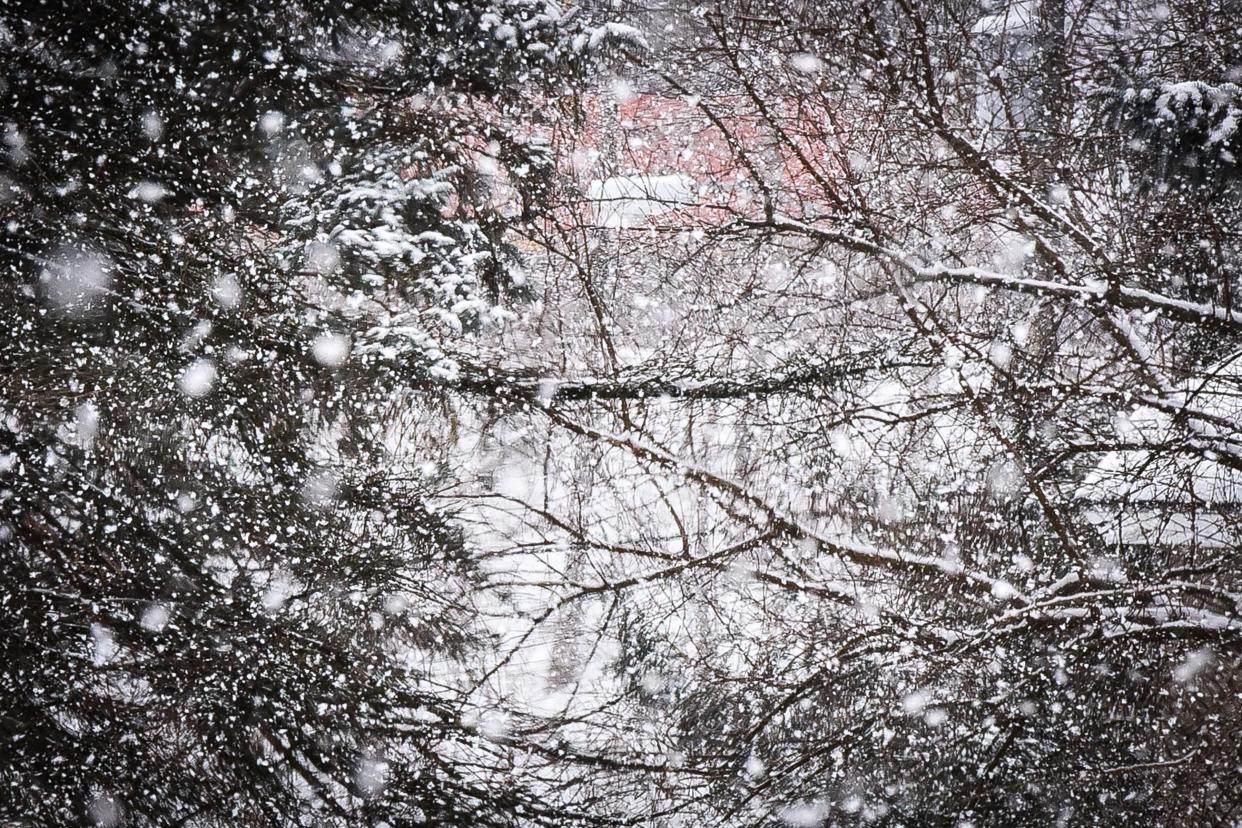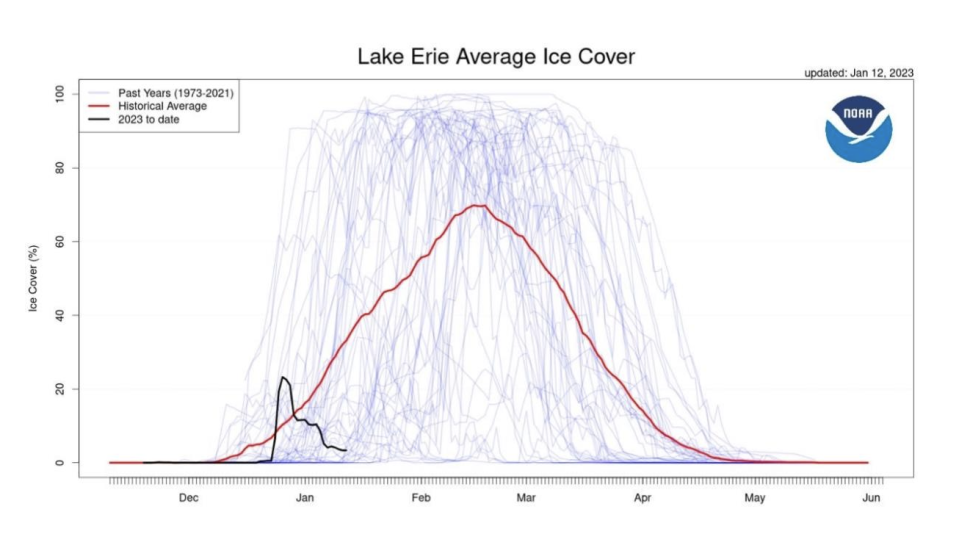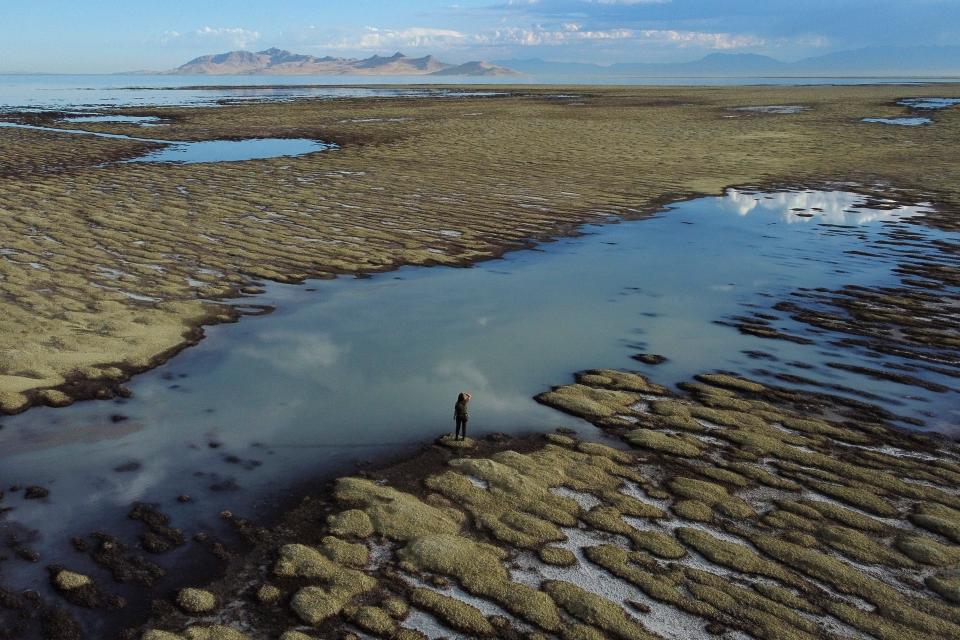It's snowed plenty this year. Where's the ice on the Great Lakes?

The 2022-23 winter has seen some huge snows, with parts of New York getting over 100 inches of snow by Jan. 15, which is above average. Despite this, much of the United States has seen above or well-above-average temperatures. While some may be celebrating the warmer temperatures, there are consequences. Some of these consequences include getting much more snow. This is particularly true for those areas that typically receive lake-effect snows.
As previously discussed, lake-effect snows are caused when cold air blows across large areas of water that have water that is warmer than the air. Warm air is less dense than cold air so the warm and moist air from the body of water rises into the cold air and cools. This cooling of the warm air forms clouds and eventually precipitation. The warmer the water and the colder the air traveling over the water the higher the risk for lake-effect snows.
The lake-effect snows typically happen early in the winter season followed by relatively little snow the second half of the winter. This is because by mid-January, a good portion of the Great Lakes are typically frozen and this shuts off the flow of evaporating water, which is the fuel for the big snows.
The 2022-23 winter has seen the second lowest ice cover by January 15 since records have been kept. The only winter to beat this year’s numbers is the 2021-22 winter. A graph produced by the National Oceanic Atmospheric Association (NOAA) shows that ice got a late start on the lakes this year but got back on track and even ahead of pace during the December blizzard. However, warm weather since that time has completely melted most of the ice.

So, there is less ice on the great lakes, what difference does that really make? Scientists have found that a lack of ice on the Great Lakes can have several consequences, including the following:
Less ice, more snow
Because of what we just learned about lake-effect snows, the longer the Great Lakes stay liquid, the longer lake-effect snows can occur. Of course, cold air has to come down and blow across the liquid lakes so if never gets cold then there won’t be snow. However, there tends to be at least short cold air intrusions and if these occur over a non-frozen lake, the among of snow from these fronts will continue to be greatly enhanced. The areas to the east of the Great Lakes will likely see much more snow than normal this winter.
Where’s the fish?
An important fish in the Great Lakes (both for the environment and the economy) is the whitefish. Whitefish count on ice covered water in order to lay their eggs safely. If the water remains unfrozen, the waves disrupt the eggs and they become dispersed without hatching. Whitefish populations in the Great Lakes are already declining due to these changes over the last several years. Less whitefish means a disruption to everything that depends on it, including the businesses that sell them.
More mussels
No, not arm muscles! Warmer waters will increase the populations of invasive zebra mussels. Zebra mussels eat phytoplankton, which is the foundation of the food chain. Warmer waters will cause the invasive mussels to eat the phytoplankton twice as fast as they already do. This will decrease the food for everything else, including those that are caught and sold to the market.
Any way you look at it, all life (including humans) would be better off if the Great Lakes froze like they used to. Since 1973, there has been more than an 80% decrease in the amount of winter ice on the Great Lakes as a whole and the problem is compounding. Less ice one year means the water can warm faster the following year and that makes it harder for ice to cool the following winter. This will continue to alter both the ecosystems and the economy of nearby populations.
Mike Szydlowski is a science teacher and zoo facilitator at Jefferson STEAM School.
Time for a pop quiz!
1. How does the Great Lake Ice coverage this year compare to the average?
2. Explain two ways that humans can be impacted by less Great Lake ice?
3. The most intense lake effect snows occur during the first half of the winter season. Why?
4. How might the decrease in ice lead to a collapse of the Great Lakes Ecosystem? Would this impact humans?
5. What conditions would cause lake effect snows to happen later in the winter?

Last week's quiz answers
1. How was the Great Salt Lake formed?
The Great Salt Lake formed during the last Ice Age.
2. Why is the Great Salt Lake so salty?
Water goes into the lake but the only way it leaves the lake is by evaporation. The salt that the rivers deposited stay in the lake while the water evaporates.
3. What is the biggest reason the lake is losing water?
The Great Salt Lake is losing water because of how much water is pulled out of the rivers that feed it.
4. What are three consequences that will occur as the Great Lake dries?
The area will become warmer and drier.
The mountains will receive less snow for ski resorts.
Toxic dust storms will poison cities.
5. What is the only way to save the Great Salt Lake?
The only way to save the Great Salt Lake is to decrease the amount of water removed from the rivers that feed it by 33-50%.
This article originally appeared on Columbia Daily Tribune: Szydlowski: Where's the ice on the Great Lakes?

